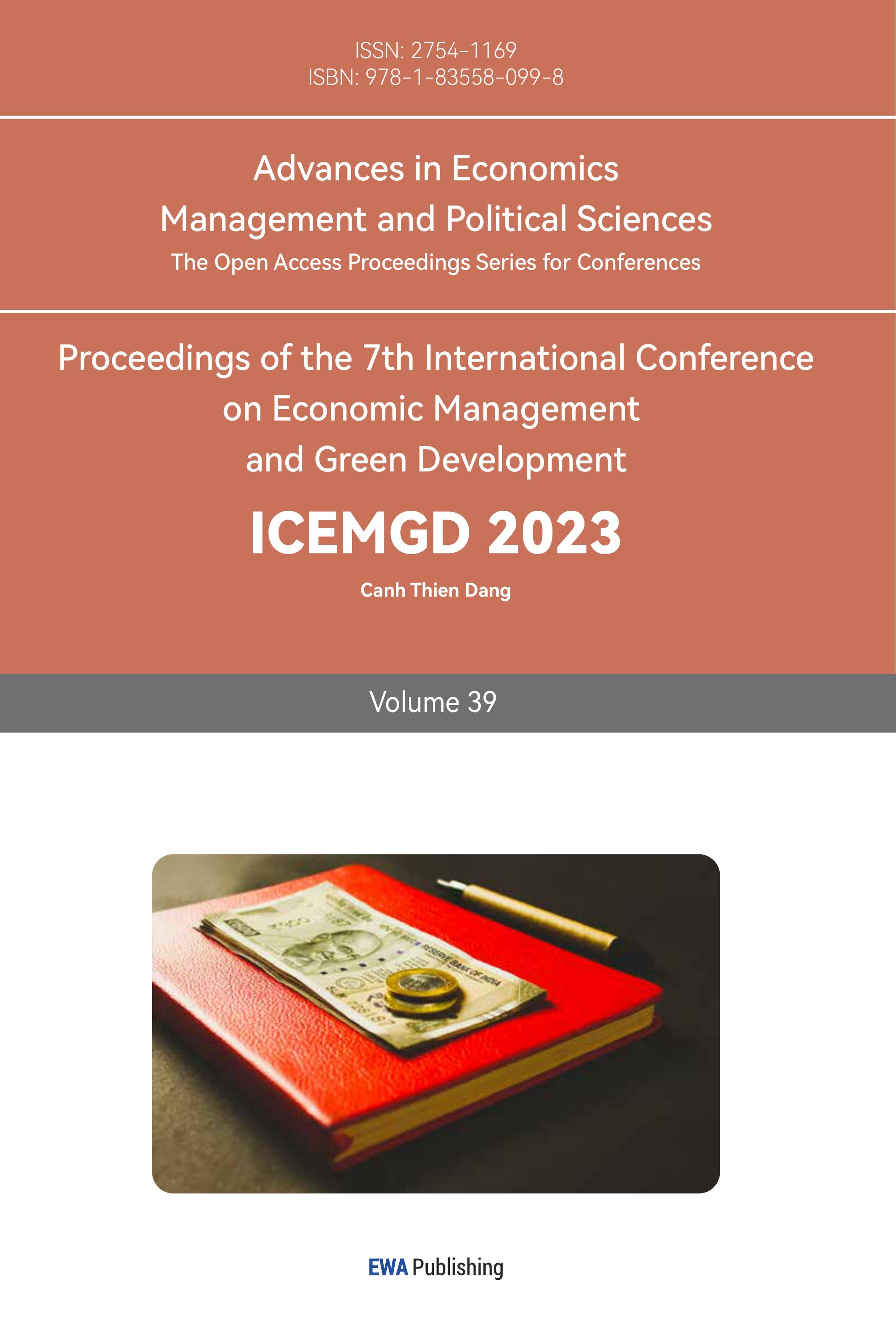References
[1]. Lu, Z., Zhu, L., Li, Z., Liang, X., & Zhang, Y. (2022). The effects of passenger risk perception during the COVID-19 pandemic on airline industry: Evidence from the United States stock market. Frontiers in Psychology, 12, 5966.
[2]. Claussen, J., Essling, C., & Peukert, C. (2018). Demand variation, strategic flexibility and market entry: Evidence from the US airline industry. Strategic Management Journal, 39(11), 2877-2898.
[3]. Park, A. H., & Seo, K. (2019). Common ownership and product market competition: Evidence from the us airline industry. Korean Journal of Financial Studies, 48(5), 617-640.
[4]. Alan, Y., & Lapré, M. A. (2018). Investigating operational predictors of future financial distress in the US airline industry. Production and Operations Management, 27(4), 734-755.
[5]. Zarb, B. J. (2018). LIQUIDITY, SOLVENCY, AND FINANCIAL HEALTH: DO THEY HAVE AN IMPACT ON US AIRLINE COMPANIES'PROFIT VOLATILITY?. International Journal of Business, Accounting, & Finance, 12(1).
[6]. Xu, Y., Park, Y. S., Park, J. D., & Cho, W. (2021). Evaluating the environmental efficiency of the US airline industry using a directional distance function DEA approach. Journal of Management Analytics, 8(1), 1-18.
[7]. Kiraci, K. (2019). Determinants of financial risk: An empirical application on low-cost carriers. Scientific Annals of Economics and Business, 66(3), 335-349.
[8]. Kang, W., de Gracia, F. P., & Ratti, R. A. (2021). Economic uncertainty, oil prices, hedging and US stock returns of the airline industry. The North American Journal of Economics and Finance, 57, 101388.
[9]. Merkert, R., & Swidan, H. (2019). Flying with (out) a safety net: Financial hedging in the airline industry. Transportation Research Part E: Logistics and Transportation Review, 127, 206-219.
[10]. Swidan, H., & Merkert, R. (2019). The relative effect of operational hedging on airline operating costs. Transport Policy, 80, 70-77.
Cite this article
Wang,S. (2023). Risk and Investment Value Analysis in the U.S. Airline Sector of the Stock Market. Advances in Economics, Management and Political Sciences,39,233-240.
Data availability
The datasets used and/or analyzed during the current study will be available from the authors upon reasonable request.
Disclaimer/Publisher's Note
The statements, opinions and data contained in all publications are solely those of the individual author(s) and contributor(s) and not of EWA Publishing and/or the editor(s). EWA Publishing and/or the editor(s) disclaim responsibility for any injury to people or property resulting from any ideas, methods, instructions or products referred to in the content.
About volume
Volume title: Proceedings of the 7th International Conference on Economic Management and Green Development
© 2024 by the author(s). Licensee EWA Publishing, Oxford, UK. This article is an open access article distributed under the terms and
conditions of the Creative Commons Attribution (CC BY) license. Authors who
publish this series agree to the following terms:
1. Authors retain copyright and grant the series right of first publication with the work simultaneously licensed under a Creative Commons
Attribution License that allows others to share the work with an acknowledgment of the work's authorship and initial publication in this
series.
2. Authors are able to enter into separate, additional contractual arrangements for the non-exclusive distribution of the series's published
version of the work (e.g., post it to an institutional repository or publish it in a book), with an acknowledgment of its initial
publication in this series.
3. Authors are permitted and encouraged to post their work online (e.g., in institutional repositories or on their website) prior to and
during the submission process, as it can lead to productive exchanges, as well as earlier and greater citation of published work (See
Open access policy for details).
References
[1]. Lu, Z., Zhu, L., Li, Z., Liang, X., & Zhang, Y. (2022). The effects of passenger risk perception during the COVID-19 pandemic on airline industry: Evidence from the United States stock market. Frontiers in Psychology, 12, 5966.
[2]. Claussen, J., Essling, C., & Peukert, C. (2018). Demand variation, strategic flexibility and market entry: Evidence from the US airline industry. Strategic Management Journal, 39(11), 2877-2898.
[3]. Park, A. H., & Seo, K. (2019). Common ownership and product market competition: Evidence from the us airline industry. Korean Journal of Financial Studies, 48(5), 617-640.
[4]. Alan, Y., & Lapré, M. A. (2018). Investigating operational predictors of future financial distress in the US airline industry. Production and Operations Management, 27(4), 734-755.
[5]. Zarb, B. J. (2018). LIQUIDITY, SOLVENCY, AND FINANCIAL HEALTH: DO THEY HAVE AN IMPACT ON US AIRLINE COMPANIES'PROFIT VOLATILITY?. International Journal of Business, Accounting, & Finance, 12(1).
[6]. Xu, Y., Park, Y. S., Park, J. D., & Cho, W. (2021). Evaluating the environmental efficiency of the US airline industry using a directional distance function DEA approach. Journal of Management Analytics, 8(1), 1-18.
[7]. Kiraci, K. (2019). Determinants of financial risk: An empirical application on low-cost carriers. Scientific Annals of Economics and Business, 66(3), 335-349.
[8]. Kang, W., de Gracia, F. P., & Ratti, R. A. (2021). Economic uncertainty, oil prices, hedging and US stock returns of the airline industry. The North American Journal of Economics and Finance, 57, 101388.
[9]. Merkert, R., & Swidan, H. (2019). Flying with (out) a safety net: Financial hedging in the airline industry. Transportation Research Part E: Logistics and Transportation Review, 127, 206-219.
[10]. Swidan, H., & Merkert, R. (2019). The relative effect of operational hedging on airline operating costs. Transport Policy, 80, 70-77.









